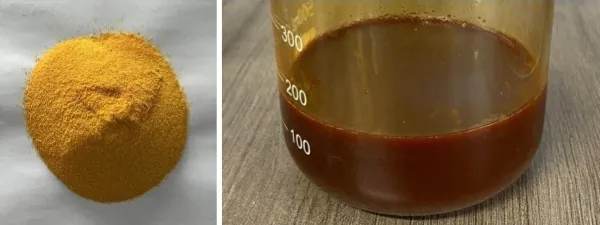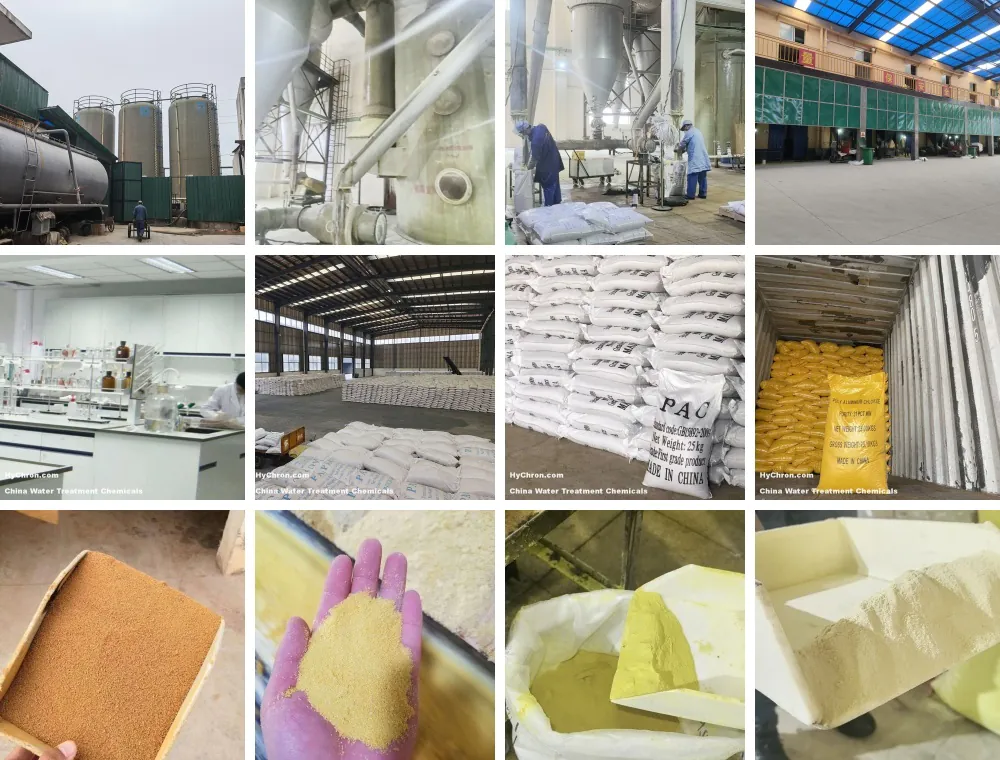Water treatment is a critical process for ensuring clean, safe drinking water and effective wastewater management. One of the most effective chemicals used for this purpose is Polyaluminum Chloride (PAC). In this article, we’ll dive deep into what PAC is, its applications, and why it has become an essential part of water and wastewater treatment systems worldwide.
What is Polyaluminum Chloride (PAC)?
Polyaluminum Chloride (PAC) is an inorganic coagulant made up of aluminum, oxygen, hydrogen, and chlorine. It’s primarily used in water treatment systems for coagulating impurities, helping to remove contaminants such as suspended solids, turbidity, and organic matter. PAC’s versatility, high efficiency, and cost-effectiveness have made it one of the most widely used chemicals in the water treatment industry.
PAC is usually available in liquid or powder form, and it is highly soluble in water, which allows it to interact efficiently with various pollutants. It works by destabilizing the particles in water, causing them to clump together into larger aggregates (flocs) that can then be easily removed by sedimentation or filtration.

Key Uses of PAC in Water Treatment
PAC is predominantly used in both potable water treatment and wastewater treatment. In potable water, it helps purify drinking water by removing harmful contaminants like bacteria, viruses, and organic matter. In wastewater treatment, PAC aids in the removal of suspended solids, phosphates, and other harmful pollutants, making water suitable for discharge or reuse.
In addition to water treatment, PAC is used in industrial applications such as textile manufacturing, paper production, and oil recovery, thanks to its efficiency in flocculation and purification processes.
How Does PAC Work?
When PAC is added to water, it reacts with suspended particles and dissolved organic materials. The aluminum ions in PAC neutralize the negative charges on these particles, causing them to clump together into larger particles (flocs). These flocs can then be easily removed from the water through processes like sedimentation or filtration.
One of the major benefits of PAC is its wide pHcompatibility (effective across a broad pH range) and its ability to perform well even at high temperatures, making it versatile and effective in a variety of water conditions.

Benefits of Using PAC in Water Treatment
- High Efficiency: PAC is highly efficient at coagulating suspended solids, turbidity, and organic matter, making it superior to many other coagulants.
- Cost-Effective: Due to its high efficiency, PAC requires smaller dosages compared to other coagulants, reducing overall chemical costs in water treatment.
- Wide pH Range: PAC performs well across a broad pH range, making it ideal for various types of water sources, from acidic to alkaline waters.
- Temperature Tolerance: Unlike some other chemicals, PAC works efficiently even in extreme temperature conditions, which is essential for year-round operation in diverse climates.
How to Dose PAC in Water Treatment
The dosing of PAC depends on factors such as water quality, pH level, and the type of contaminants present. Typically, dosing involves adding the correct amount of PAC into the water system to optimize coagulation. Overdosing or underdosing can affect the efficiency of the treatment, so it’s important to tailor the dosage according to the specific needs of the water being treated.
Dosing systems such as automatic pumps or manual methods are used to add PAC in precise amounts. Operators typically adjust the dosage to match the turbidity of the water, ensuring that the coagulant works at its full potential.
PAC vs. PAM: Understanding the Difference
It’s important to note that PAC is often compared to Polyacrylamide (PAM), another chemical commonly used in water treatment. While PAC is an inorganic coagulant, PAM is an organic flocculant. PAC is used to destabilize suspended particles in water, causing them to clump together, while PAM is typically used after coagulation to help form larger flocs and improve their settling.
The combination of PAC for coagulation and PAM for flocculation is often used in some water treatment processes to optimize impurity removal and improve overall system efficiency.

Frequently Asked Questions About PAC
1. Is PAC Safe to Use?
Yes, PAC is a non-toxic, odorless, and tasteless chemical. It is safe to use in both potable and industrial water treatment applications when handled properly. However, like all chemicals, it should be handled with care, and appropriate safety measures should be followed during storage and application.
2. Can PAC Be Used in All Types of Water Treatment?
PAC is highly versatile and can be used in a wide range of water treatment processes. It is effective for coagulating suspended solids in municipal drinking water, industrial wastewater, sewage, and even mining wastewater. It is also used in food processing, paper mills, and various manufacturing sectors.
3. How Do I Choose the Right PAC Product?
The selection of PAC depends on the specific water treatment needs and the type of contaminants in the water. Generally, the concentration of aluminum in the PAC (e.g., 10-30%) and the form (liquid or powder) are key factors to consider. It’s advisable to consult with a water treatment expert to choose the correct product for your needs.

Conclusion
Polyaluminum Chloride (PAC) is an essential coagulant that plays a crucial role in improving water quality by efficiently removing suspended particles and organic matter. Whether you’re treating potable water, wastewater, or industrial effluent, PAC’s high efficiency, cost-effectiveness, and versatility make it the go-to chemical for water treatment systems worldwide.
By understanding how PAC works and its wide range of applications, water treatment professionals can optimize their processes, ensure cleaner water, and contribute to a healthier environment. Embrace PAC for more effective, cost-efficient water treatment solutions today.
